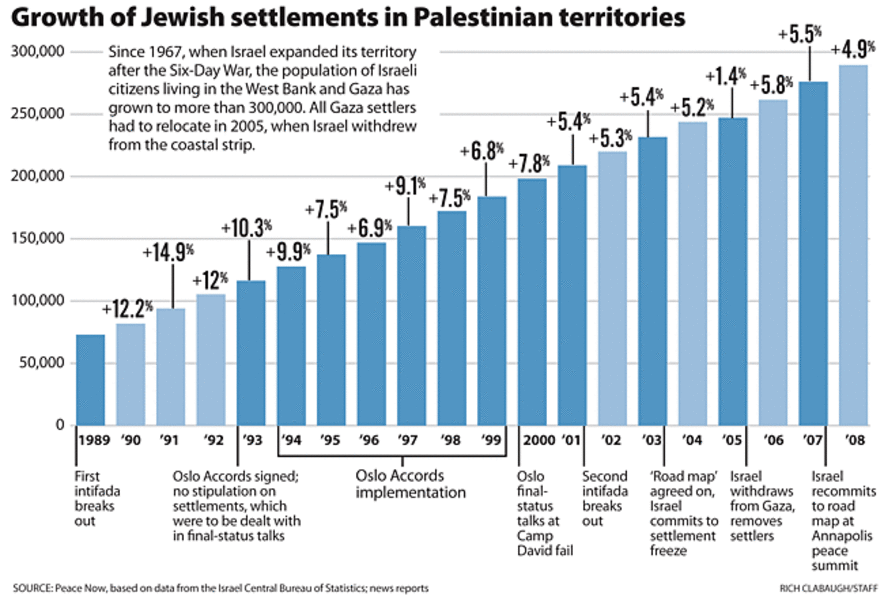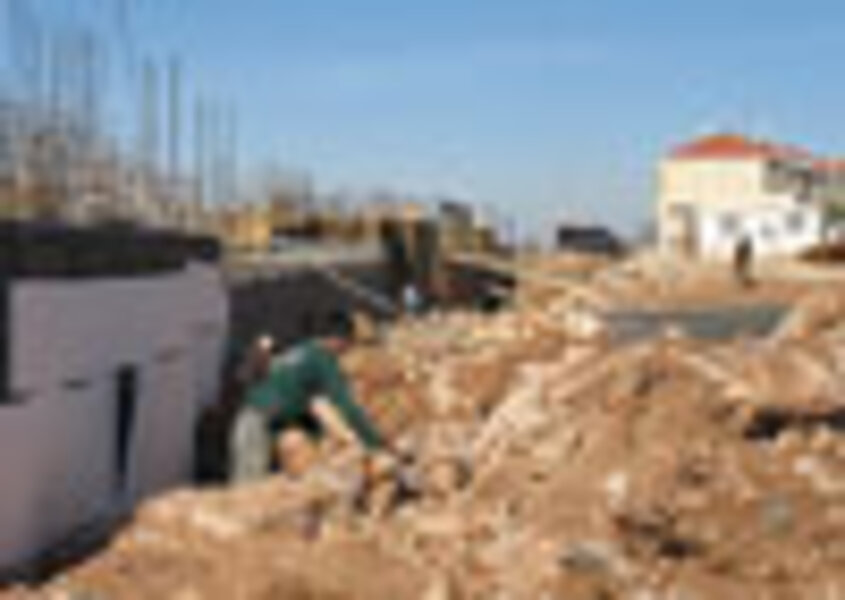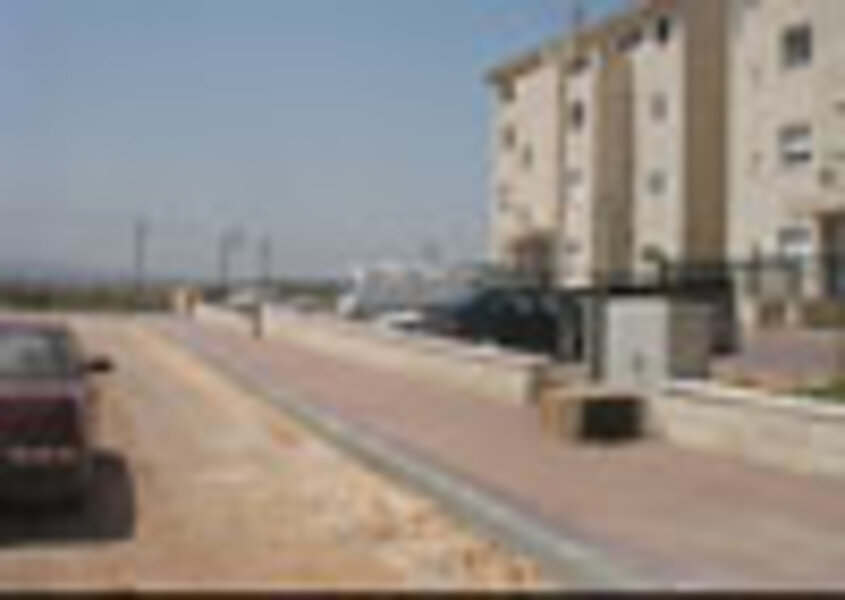Obama demands that Israel stop settlements. How feasible is that?
Loading...
| Ariel, West Bank
This week, US President Barack Obama conveyed a clear message to his Israeli counterpart, Benjamin Netanyahu: the expansion of Jewish settlements in the West Bank must stop.
On Thursday, Israeli police evacuated an unauthorized settlement outpost of Maoz Esther, but Israeli peace activists said the move was a public relations stunt, since no settlers live there on a permanent basis.
Amid the ebb and flow of US peace initiatives and the rise and fall Israeli governments, the unchecked growth of Israeli citizens in territories claimed by the Palestinians has been a constant. But now that there appears to be a will at the White House, is there a way to prompt Mr. Netanyahu to take his right-wing government where no Israeli prime minister has ever gone? While Israel has agreed to freeze settlement growth in the past, implementing, monitoring, and enforcing such an agreement is fraught with political and logistical difficulties.
"American presidents have tended to lack determination on the settlement question, although all seem to agree it is a major obstacle. That legacy is Obama's first challenge," says Scott Lasensky, a senior research associate at the US Institute for Peace. "The good news is that the Israeli body politic has given up on settlements, the problem being that successive Israeli governments have been unable and unwilling to stop them."
Stalled peace, flourishing construction
When former President George W. Bush got former Israeli Prime Minister Ehud Olmert to commit to a freeze on settlements at the Annapolis peace summit 18 months ago, in the sprawling settlement of Ariel builders had just finished the foundation work on four new apartment buildings on Moriah Street – located on the southeastern edge of this Israeli bedroom community in the heart of the West Bank.
As the Annapolis process stalled and collapsed, the apartments were completed and sold to Israelis willing to move across the Green Line into the West Bank, where home prices are cheaper. Now, the frames of four more bigger buildings are nearing conclusion just up the road.
"It's a new building in a settlement, and if someone went out there, we'd note that. That's a crystal-clear violation," says a Western diplomat, referring to the Bush administration's 2003 "road map" – a blueprint for peace that calls for a settlement freeze. Israel has agreed to the road map but claims implementation is dependent on Palestinian fulfillment of parallel obligations.
How to monitor a freeze
While Israelis and Palestinians negotiated the nitty-gritty details of establishing a Palestinian state in the West Bank and Gaza in the final year of the Bush administration, US military and diplomatic officials were deployed in the West Bank to monitor both Israeli and Palestinian compliance with the road map. The peace plan calls on the Palestinians to rein in militants while Israel ceases settlement activity and lifts movement restrictions on Palestinians.
After a pause during the transition at the White House, American monitors – drawn from the military and the State Department – are ramping up efforts to keep tabs on implementation of a settlement freeze. US envoy George Mitchell is also setting up an office, which is expected to be involved in refereeing.
The monitors are trying to build a database independent of the information they get from the Israeli government. Monitors will also have to find out how Israel's government responds to violations.
The question for US policymakers is how to use evidence of future violations. The Obama administration has many tools at its disposal: a private protest through diplomats, a public report card, economic pressure or political pressure, among others. That risks damaging ties with a close ally as well as instigating political protest from American Jews.
"There aren't firm answers yet," says the diplomat. "You're churning up new soil that hasn't been plowed in a while."
More than 300,000 settlers today
The last president to challenge Israel on settlement expansion was George H. W. Bush, who withheld loan guarantees in 1991, when former Prime Minister Yitzhak Shamir refused to rein in expansion.
Another former prime minister, Yitzhak Rabin, announced a freeze on the establishment of new settlements shortly after he was elected in 1992. But building in existing settlements continued apace. From 1993 to 2000, the years of the Oslo peace process between Israelis and Palestinians, there was a 71 percent boom in the Jewish settler population in the West Bank and Gaza Strip. The total rose to 198,000, not including those in East Jerusalem.
As of the end of 2008, settler numbers have grown to 300,000 living at about 120 settlements and dozens of outposts. In addition to residences, the growing community needs public buildings and better roads. The position of the current government is that building should be permitted to allow for the "natural growth" of settlement population.
'We're not the 51st state'
Zalman Shoval, a former Israeli ambassador to the US and a foreign policy adviser to Netanyahu, said the right to build inside the current municipal boundaries of the settlements is something that no Israeli government can concede.
"From a moral standpoint, it's difficult for me to accept the [equating] of building new bedrooms in the settlements with stopping suicide bombers," he says.
This week, Israel and the US agreed to establish a joint committee to discuss implementation of the settlement freeze, as well as the lifting of restrictions on Palestinian movement and goods into Gaza.
The two sides will have to reach an agreement on a definition of a settlement and just what constitutes a violation.
Enforcing a freeze will require monitoring dozens of locations in the West Bank and clamping down on a handful of government agencies that continue to fund expansion projects – not an easy task for a government that counts the settlers a main constituency.
"There's all sorts of loopholes. Are you going to deny them a new nursery school?" says Yossi Alpher, the coeditor of the online Israeli-Palestinian web op-ed forum Bitterlemons.org. "Even the most dovish prime minister would have to point to American pressure" to justify enforcing a settlement freeze.
One of the settlements likely to be targeted is the outpost of Migron, a hilltop near the Palestinian city of Ramallah littered with mobile hopes, where dozens of families moved after 2001. But an effort to evacuate Migron is almost sure to spark an impassioned political battle if not a battle over the outpost itself.
"We're not the 51st state," says Itai Harel, a spokesman for Migron settlers, who bristles at US pressure to freeze settlement growth. "If they want to help the people of Israel to return their land, that's fine. But if they want to say this is lawful, and that isn't lawful, what business is it of theirs? They have no moral right."
Enforcing freeze could drive hard-liners from government
Over the years, dovish governments neglected imposing a settlement freeze because they wanted to avoid the political fallout from a clash with the settlers such as Mr. Harel. However, both Mr. Alpher and Dr. Lasensky cautioned that the degree to which Israeli governments are able to implement a settlement freeze depends on the success the US has in ensuring the Palestinians are complying with their road map obligations.
Michael Sfard, a lawyer representing the settlement-watch project of the dovish Peace Now group, says the Obama administration should start by requesting that Netanyahu deliver on a commitment, made to the US in a 2004 letter by former Prime Minister Ariel Sharon, to remove unauthorized settlement outposts.
He predicts political fallout from the eviction of about 700 of the most hard-core settlers from about 21 outposts could create the momentum for a settlement freeze.
Such a move would probably cause hard-liners to quit the government, allowing a new coalition to be formed as well as generating public support for a clampdown. "It will create a snowball effect," he said. "It can't stop there."








